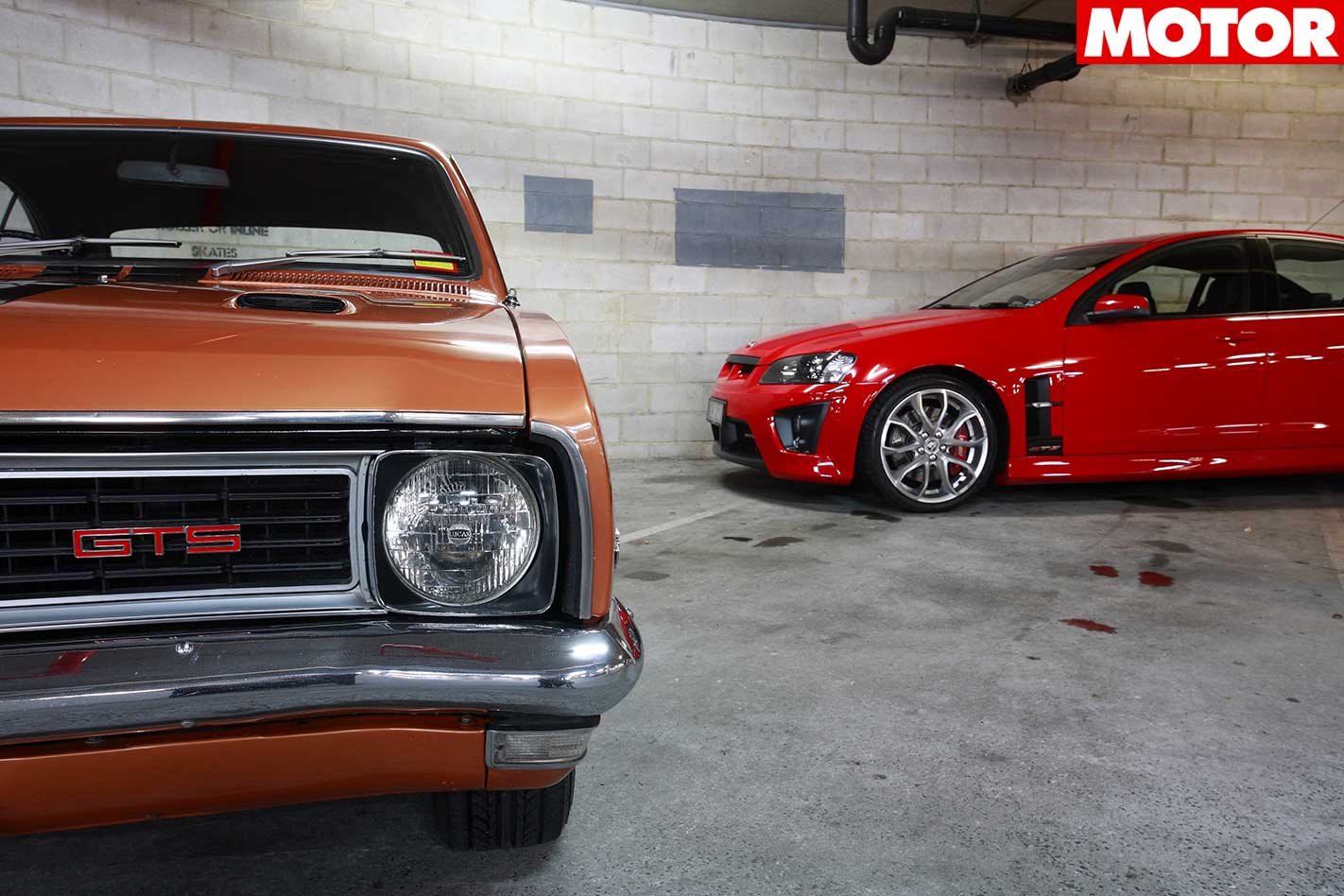Gran Turismo Sportivo. Grand Touring Sport. Growly, Tough Street-thug. Whatever ‘GTS’ means, it’s merely incidental.
This feature was first published in MOTOR Magazine’s August 2008 issue
What matters is the public’s undying affection for a red three-lettered badge supplementing Holden’s lion-and-stone emblem (or HSV’s lion and race-helmet) that symbolises Australia’s talent for creating giant slayers.
Pre-GTS, a Holden was nothing more than half-a-dozen cylinders in a traditional five/six-seat sedan or wagon. The very best of them – the 1967 four-speed manual HR 186S – could manage just under 18-dead for the quarter mile and almost see 100mph (161km/h), but the bent-eight GTS left the HR languishing in the exhaust trails billowing from its rear pipes.

In just 14 months, engine output had more than doubled. Morals campaigners must have freaked. It’s funny how history repeats itself, however. Here we are, exactly 40 years later, and things have come full circle.
When HSV launched the C4B-engined GTS in 2000 – after seeing the badge disappear completely between 1979 and 1992 – its M5-beating 300kW was a new Aussie muscle-car record, and a stark contrast to the 215kW it sported in 1995 (VS GTS) and 200kW in ’92 (VP GTS).
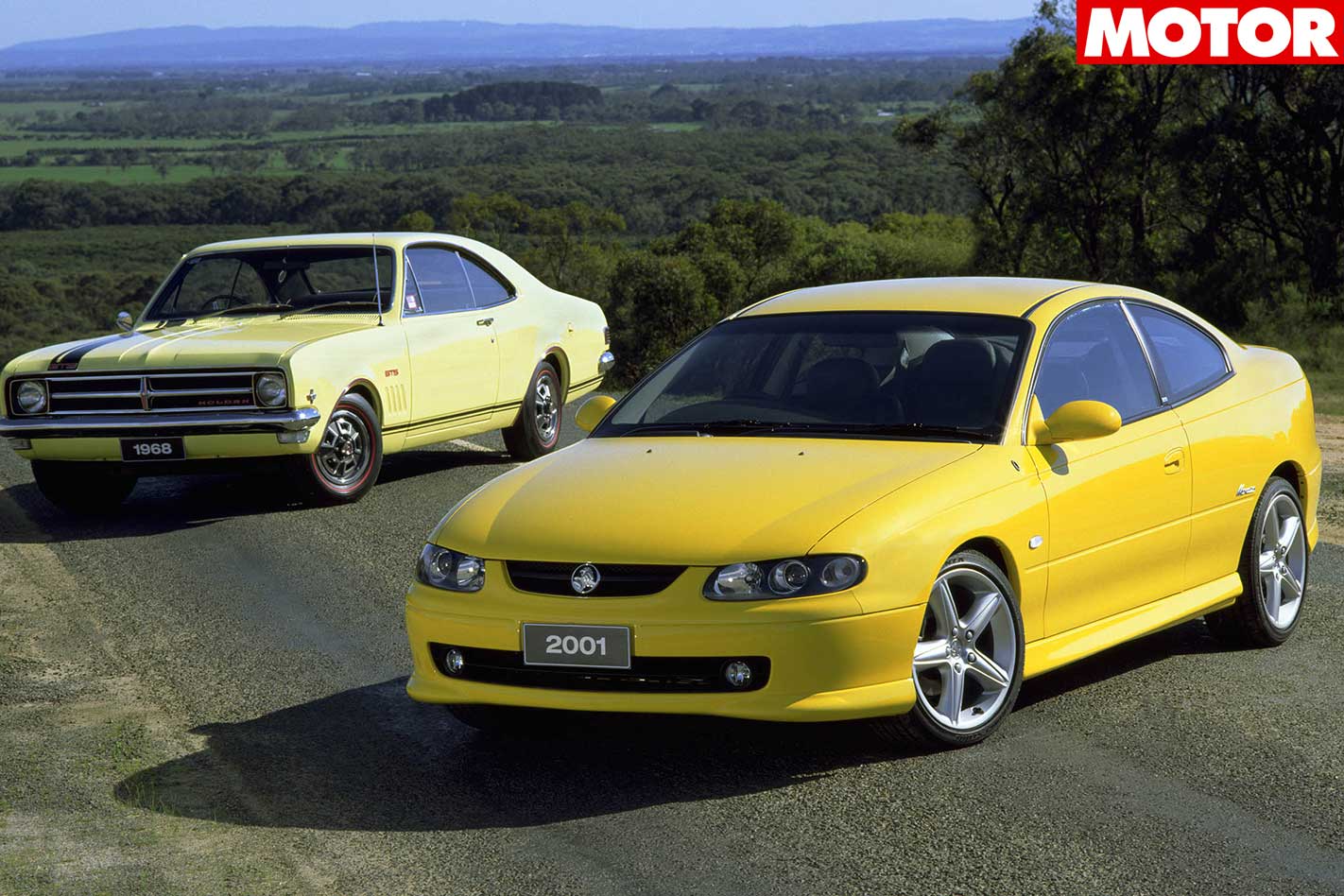
To find out, we thought we’d compare the finest of the original GTSs with the latest and greatest. As the ’69 HT Monaro GTS 350 was to the ’68 HK, the current 2008 E-series GTS is, superficially, just a re-engined version of the landmark ’06 variety. But, like the HT 350, it’s recognised as the finest of its type – a subtle but worthwhile enhancement of a totally new-generation car.
The similarities don’t end there. The defining characteristic of a muscle car is its engine and both the HT and VE use Chevrolet bent-eights. And, would you believe it, they’re both from entry-level Corvettes.
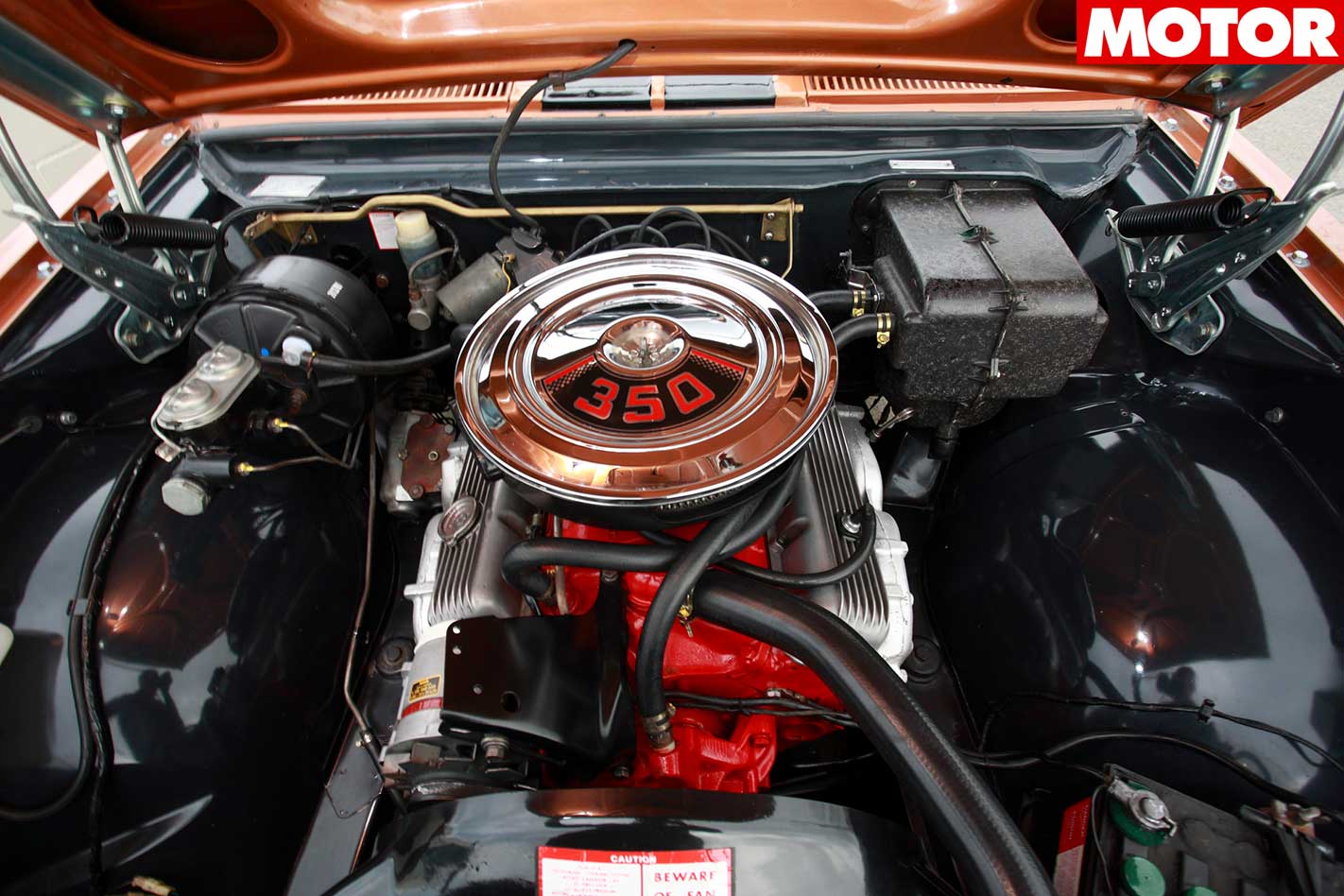
Just about the only Chevy that didn’t run the 350 was the rear-engined Corvair, and for very good reason. In an era where most Yank metal is front-drive and V6, the ’08 GTS’s 6162cc LS3 V8 holds a far more exalted position.
It’s a ’Vette engine, simple as that. Indeed, only the 7.0-litre LS7 (Corvette Z06) and record-breaking 6.2-litre supercharged LS9 (Corvette ZR1 and Cadillac CTS-V) breach the LS3’s position in GM’s current V8 hierarchy.
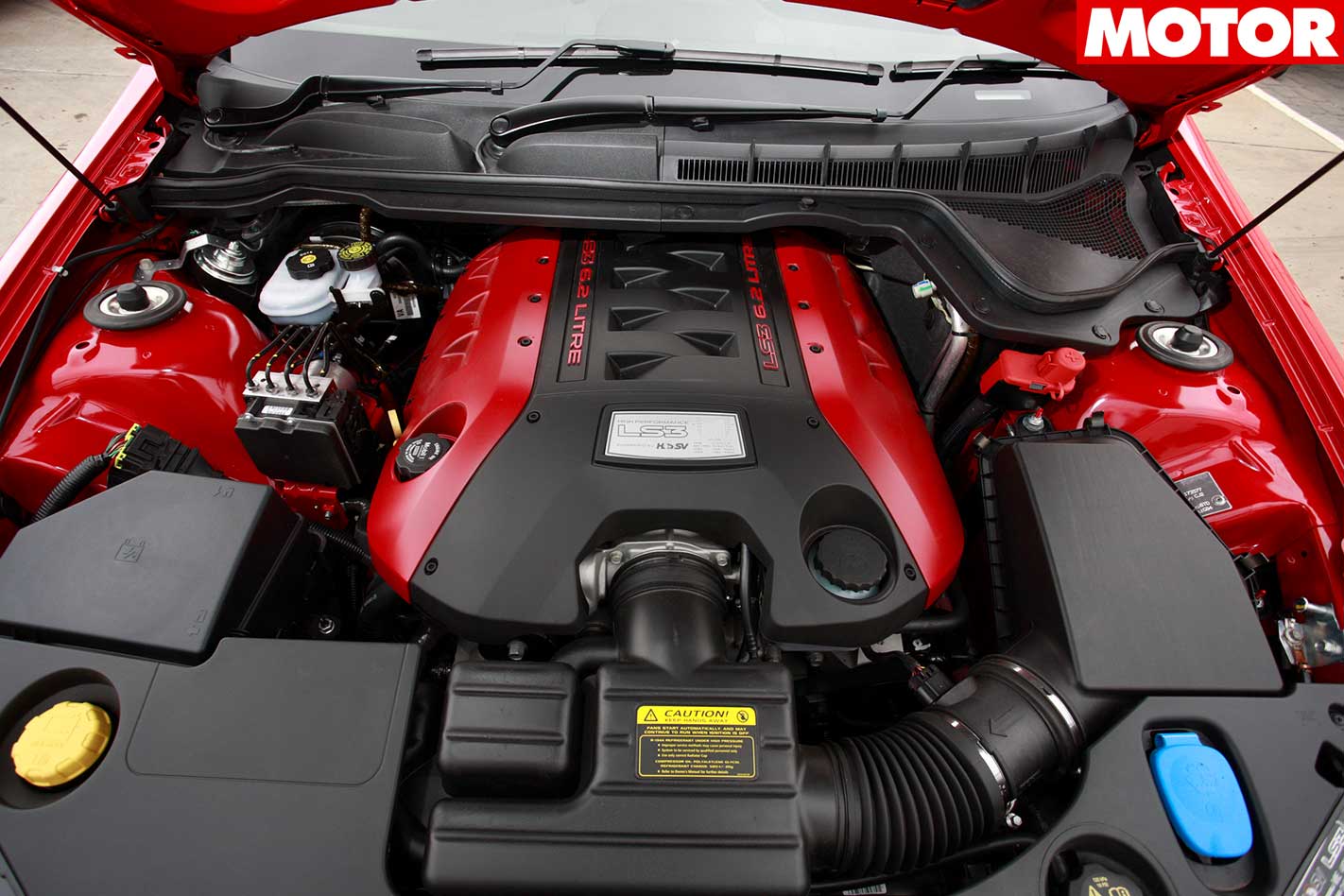
Climbing into the HT Monaro is an elegant affair. You depress a simple push-button door handle, slip around its lengthy frameless doors and need not avoid chunky seat bolsters to rest your posterior in its cool, low-back bucket seats.
This example (owned by Sydney bloke, John Bertuzzi) features standard grained-vinyl seats, not the optional houndstooth cloth (in black/white or black/red), and they’re surprisingly comfortable, though the under-cheek padding doesn’t have quite the support it would’ve ‘back in the day’.
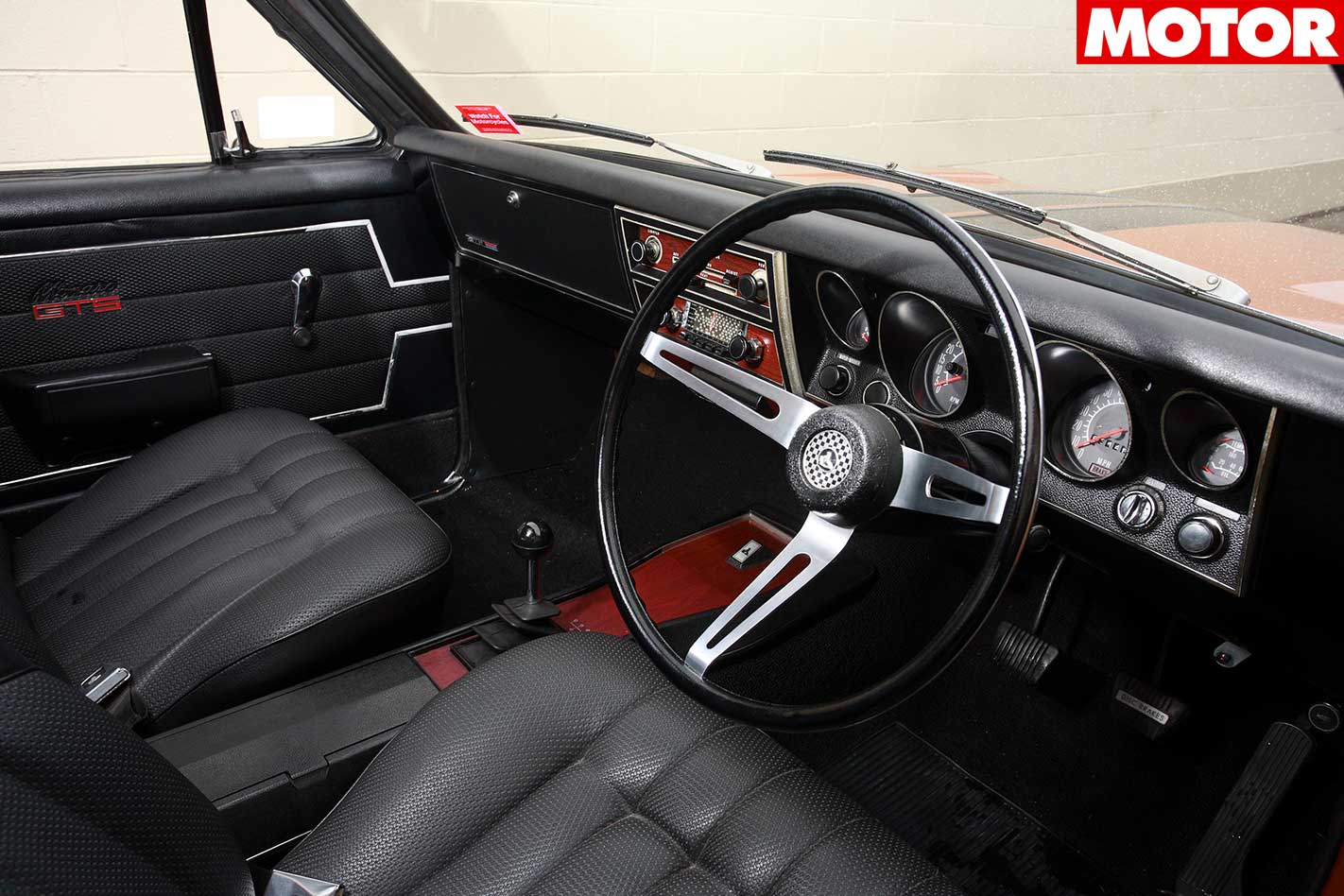
The dashboard’s controls are not only clearly marked, but also illuminated, and vision is, well, brilliant, at least to the front and side. Despite having a slightly bigger rear window than the HK Monaro, the HT’s vaguely hippy, vaguely Opel Rekord Coupe lines mean that shapely, but somewhat obstructive rear metal is classic form over function. Which is one thing the HT clearly shares with the VE.
Holden’s two-year-old Commodore shape looks as taut and aggressive as it did on day one, but its beautifully proportioned form is achieved at the expense of vision in most directions. Up front, the annoyingly thick A-pillars are a stark contrast to the HT’s slender, unobtrusive numbers, and without parking sensors, only the rear spoiler lets you know where the VE ends.

Seated behind the HT’s chequered-flag wheel hub, you can actually see the ignition slot, mounted on the dashboard to your right, like a Porsche 911’s, not hidden on the steering column like a Commodore’s. But where the VE simply fires and flies, the HT isn’t so simple.
That stubby gearstick might sit in the right place, but the reaction levers required to make the four-speed’s indirect shift linkage work mean that skipping gears (say second to fourth) feels clunky, and throttle-blipping on downchanges is a virtual necessity.
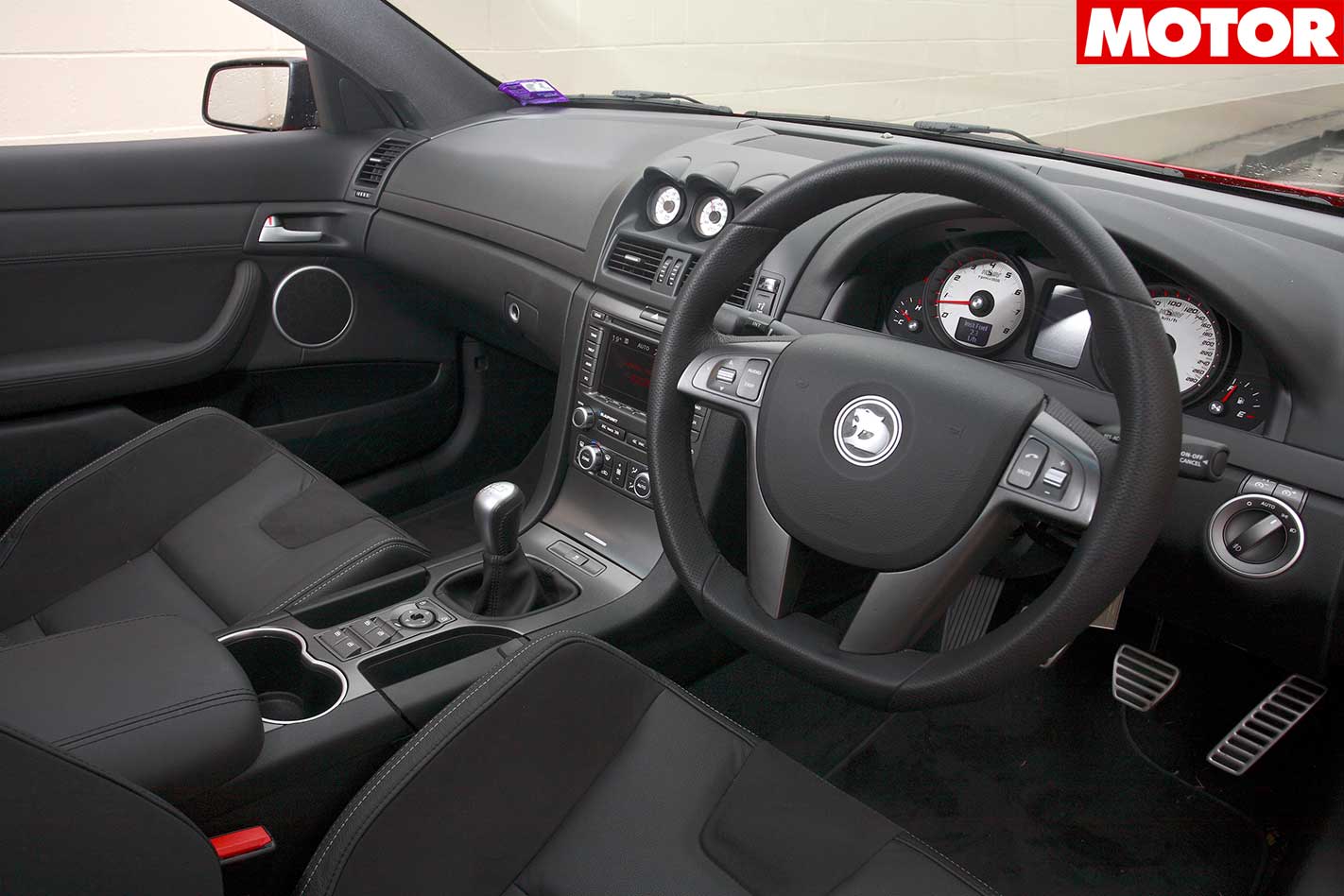
On the move, though, the HT’s four-speed feels almost sporty, particularly considering the only old Holdens I’ve ever driven are three-on-the-tree manuals with no synchromesh on first. The shortish shift throw suits the stubby lever, but the great-looking steering wheel’s thin rim feels totally at odds with the GTS 350’s Bathurst-winning status.
There’s no feel or connection at all at straight ahead, in fine recirculating-ball tradition, but the steering improves once the HT is loaded up in a corner, though it still demands a fair amount of trust.
To combat the wheel’s anorexic girth, you tend to rest your thumbs on and partly steer with the real-metal spokes, but you’re better off relying on information from the HT’s chassis for true directional info.
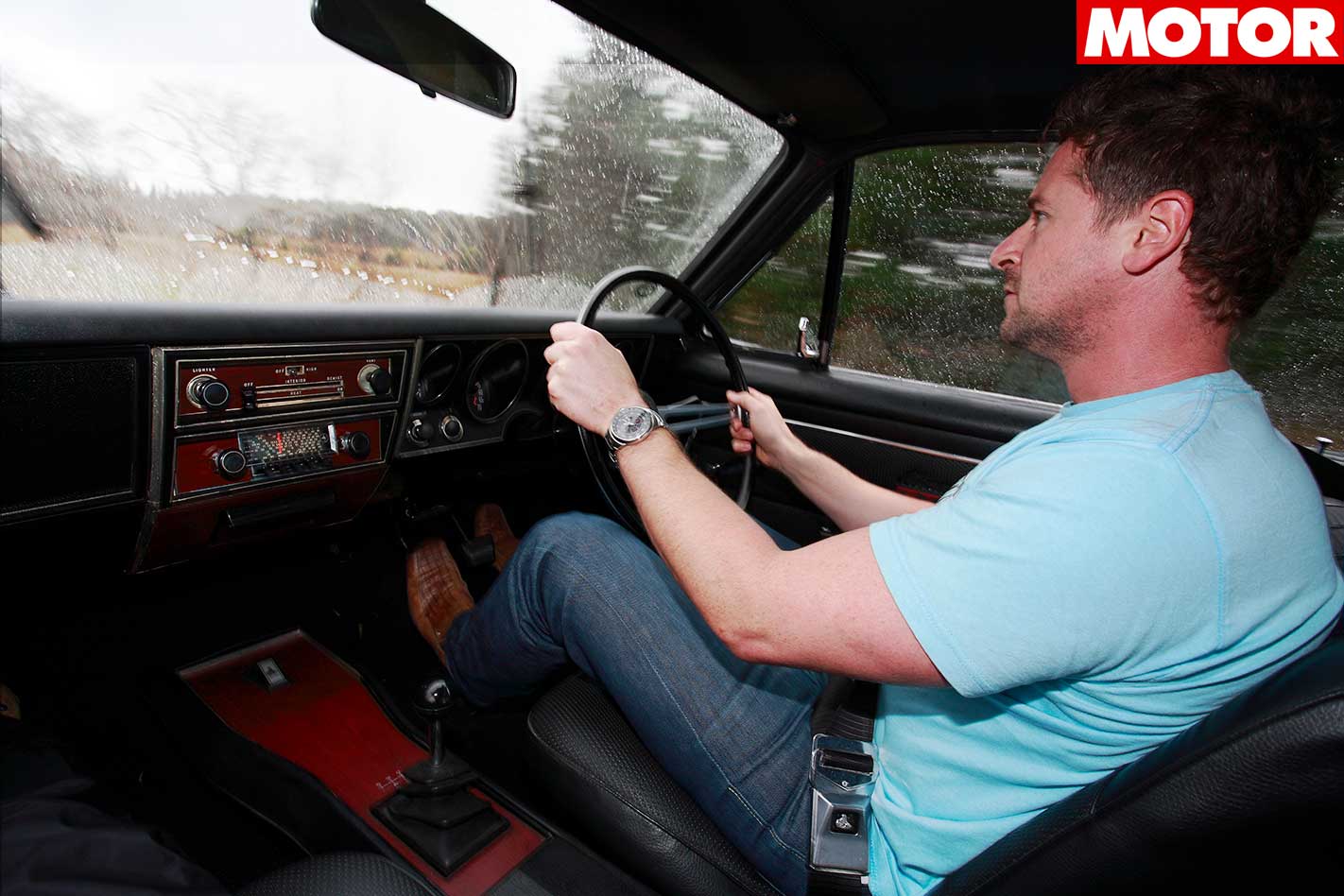
Throttle travel is long, making heel-and-toeing bloody difficult, and throttle response via a mechanical cable to its four-barrel Rochester Quadrajet carburettor simply doesn’t compare to the instant enthusiasm of the electronic-throttled LS3.
But bury the accelerator deep into the firewall and the HT really hauls from 3000 to 5000rpm, accompanied by some cranky, old-school induction and fan noise, backed by a proper V8 exhaust note.
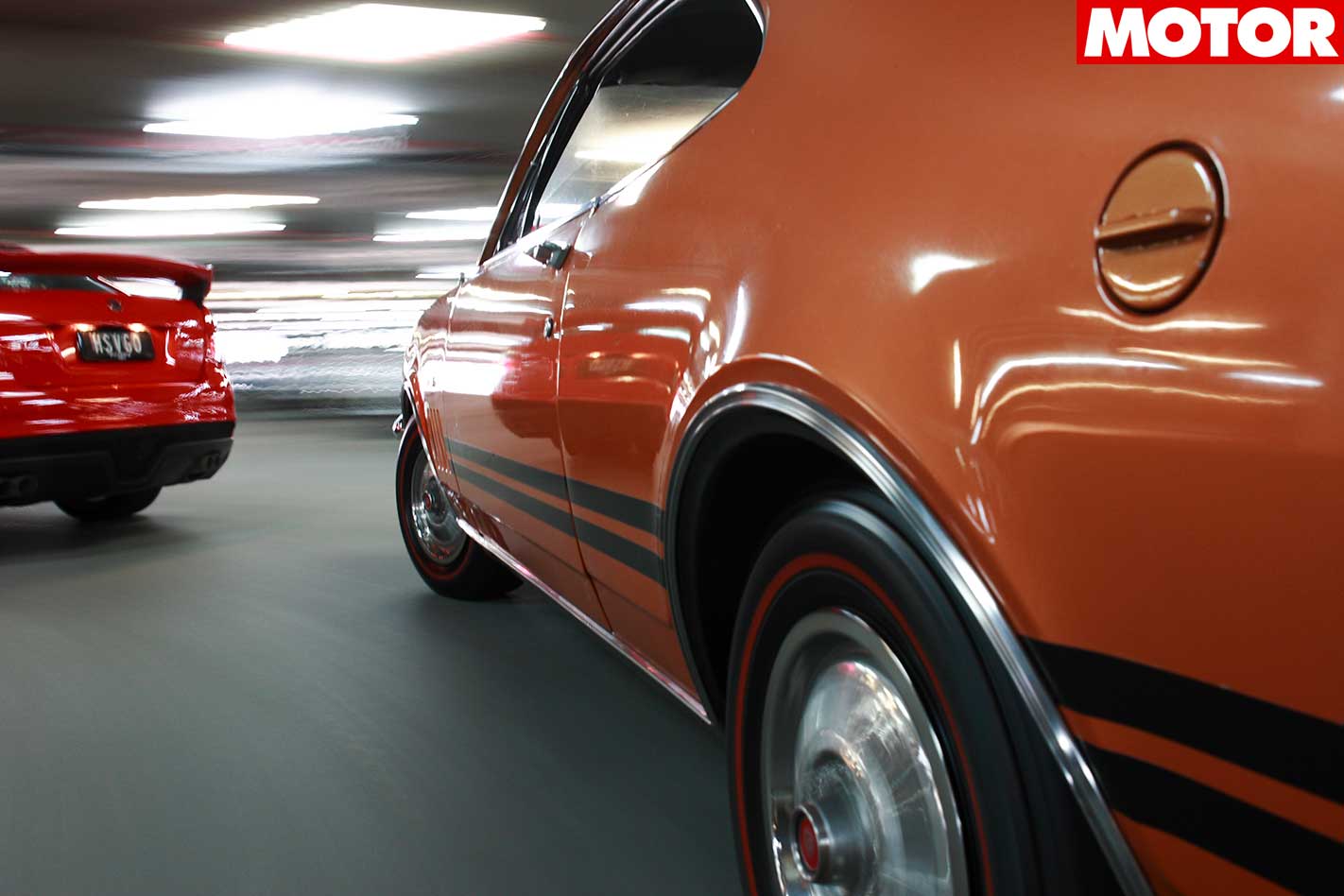
At the old ton, she’s reasonably loud – in terms of both engine and wind noise – which is what you’d expect of a 40-year-old car, but also totally at ease and mightily stable. And this is in teeming rain. Only the two-speed wipers (slow and glacial) can’t keep up. And possibly the fairly weighty brakes if you really had to lean on them.
But at what was once a legal open-road speed, you can hear, feel, smell, even taste, the big-hearted HT 350’s Bathurst pedigree. All those senses convey what was once considered incredibly fast. That a new one would approach 135mph (217km/h) with the 2.85 diff and plenty of empty road is entirely believable. And still worthy of celebration.
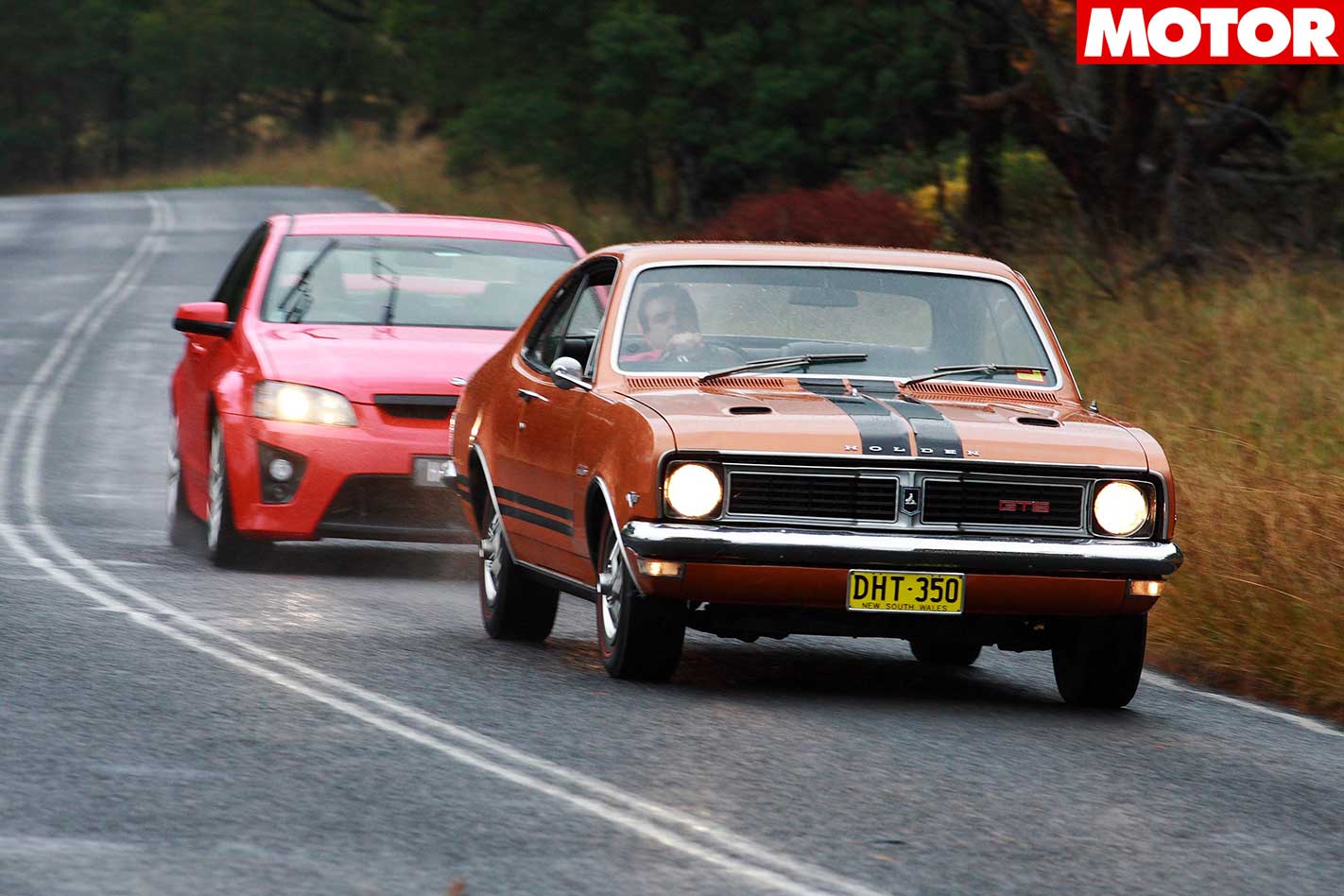
It still sounds like a petrolhead’s V8, but there are no rough edges anymore. No uneven idle, no induction roar, nothing even remotely agricultural. The 2008 car is a thoroughly modern, wonderfully accomplished and deserving benefactor of that red three-lettered badge. Best of all, it still has character. Six-point-two litres of it.
At the height of GM’s (and America’s) glorious power war of ’69, Australia’s efforts went totally unnoticed, even though for us, that year was the start of a frenetic, and now legendary, three-year period of domestic muscle-car development. Today, we’re Lutzy’s best mate and everyone knows about the rear-drive V8s from down under. And we’ve hit a muscle-car sweet spot to rival the glory days of four decades ago.
Here’s praying this time it never ends.
BEST OF THE ‘GTS’ BREED
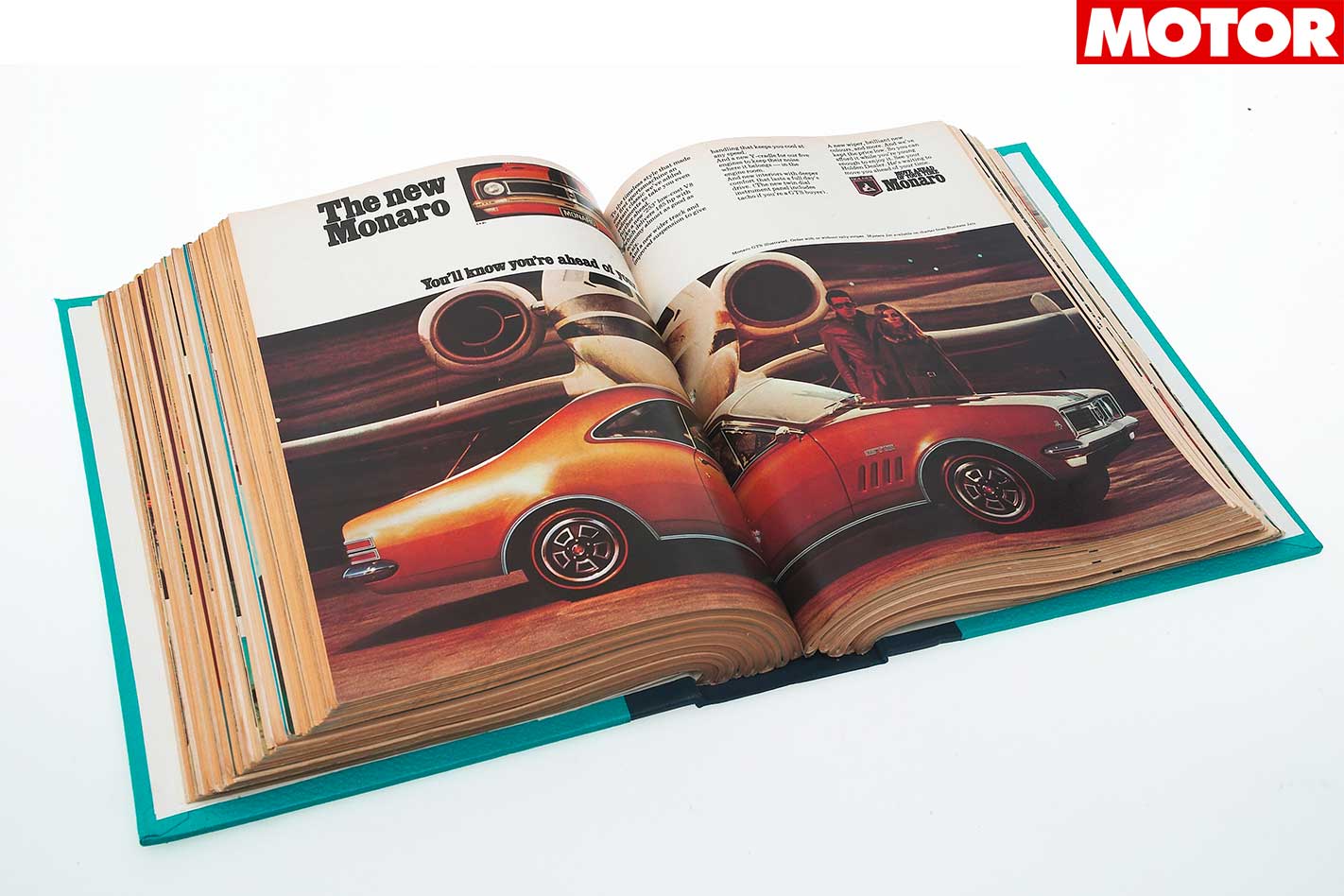
The original 1968 HK GTS 327 looks purer, but isn’t as fast or as well-sorted, while the softer 1970 HG GTS 350 has the lairiest colours, but had ceded its Bathurst racing focus to the LC Torana GTR XU1.
Our October ’69 test, headlined ‘Mightiest Monaro’, gushed over the HT 350’s “brilliant” performance. “It is an excellent-handling car with good brakes, sharp steering and immense controllability generally.” It wasn’t until the 1977 HZ that another GTS revived the HT 350’s driver appeal. But not its grunt.
FAST FACTS
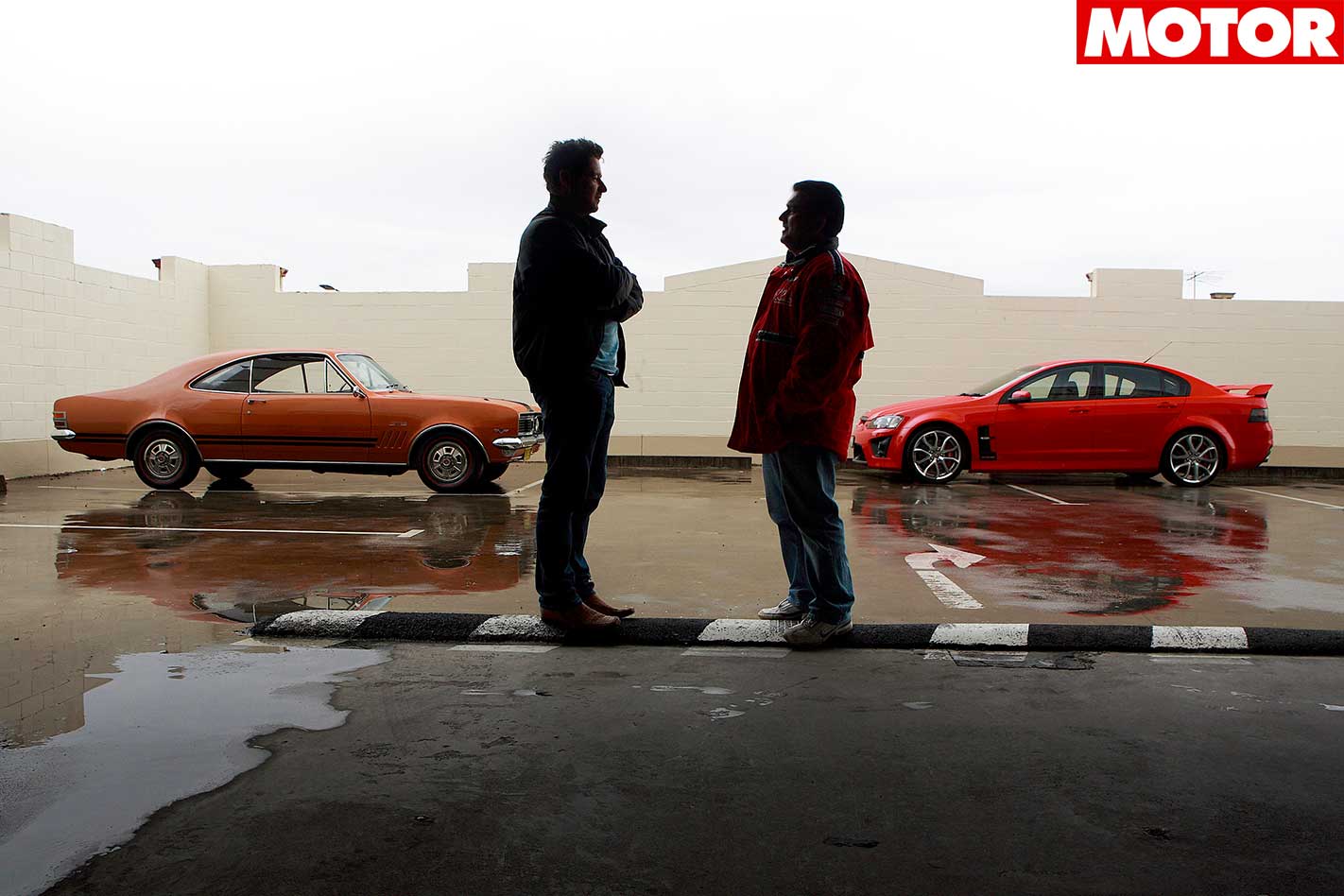
| u00a0 | 1969 Holden HT Monaro GTS 350 | 2008 E-Series HSV GTS |
| BODY | 2-door, 5-seat coupe | 4-door, 5-seat sedan |
| DRIVE | rear-wheel | rear-wheel |
| ENGINE | 5734cc 90-degree V8, OHV, 16v | 6162ccu00a090-degree V8, OHV, 16v |
| MATERIAL | iron head/iron block | alloy head/alloy block |
| BORE/STROKE | 101.6 x 88.4mm | 103.25 x 92.0mm |
| COMPRESSION | 10.25:1 | 10.7:1 |
| POWER | 224kW @ 4800rpm | 317kW @ 6000rpm |
| TORQUE | 515Nm @ 3200rpm | 550Nm @ 4600rpm |
| WEIGHT | 1504kg | 1829kg |
| POWER/WEIGHT | 149kW/tonne | 173kW/tonne |
| 0-400m | 15.7 sec (tested in Oct ’69) | 13.5sec (tested in July u201908) |
| TOP SPEED | 209km/h (est) | 250km/h (limited) |
| TRANSMISSION | 4-speed manual | 6-speed manual |
| GEAR RATIOS | 2.54/1.80/1.44/1.00 | 3.01/2.07/1.43/1.00/0.84/0.57 |
| FINAL DRIVE | 3.36 | 3.70 |
| SUSPENSION (f) | upper A-arms, coil springs, anti-roll bar | struts, A-arms, magnetic dampers, anti-roll bar |
| SUSPENSION (r) | live axle, leaf springs, radius rods | multi-links, coil springs, magnetic dampers, anti-roll bar |
| L/W/H | 4694/1824/1397mm | 4943/1899/1468mm |
| WHEELBASE | 2794mm | 2915mm |
| TRACKS | 1483/1483mmu00a0(f/r) | 1592/1590mm (f/r) |
| STEERING | recirculating ball | power rack-and-pinion |
| BRAKES (f) | 270mm solid discs, single-piston calipers | 365mm ventilated discs, four-piston calipers |
| BRAKES (r) | 254mm drums | 350mm ventilated discs, four-piston calipers |
| DRIVER AID | N/A | ABS, EBD, BA, ESP, TC |
| WHEELS | 14 x 6.0-inch; steelu00a0(f/r) | 20 x 8.0-inch (f), 20 x 9.5-inch (r); alloy |
| TYRE SIZES | 215/65R14 96Hu00a0(f/r) | 245/35R20 (f),u00a0275/30R20 97Y (r) |
| TYRE | Bridgestone Turanza GR-50 | Bridgestone Potenza RE050A |
| FUEL/TANK | 98 octane/114 litres | 98 octane/73 litres |
| PRICE (in 2008) | $3995 (1969) | $76,990 (2008) |
| PROS | Iconic form, pillarless sides, highway grunt, noise, character | Presence and proportion, V8 meat, balance, seats, character |
| CONS | Vague steering, recalcitrant gearchange, thin wheel rim | Crap vision, plasticky dash, non GTS-specific wheels |
| RATING | 8.5 out of 10 stars | 8.5 out of 10 stars |

